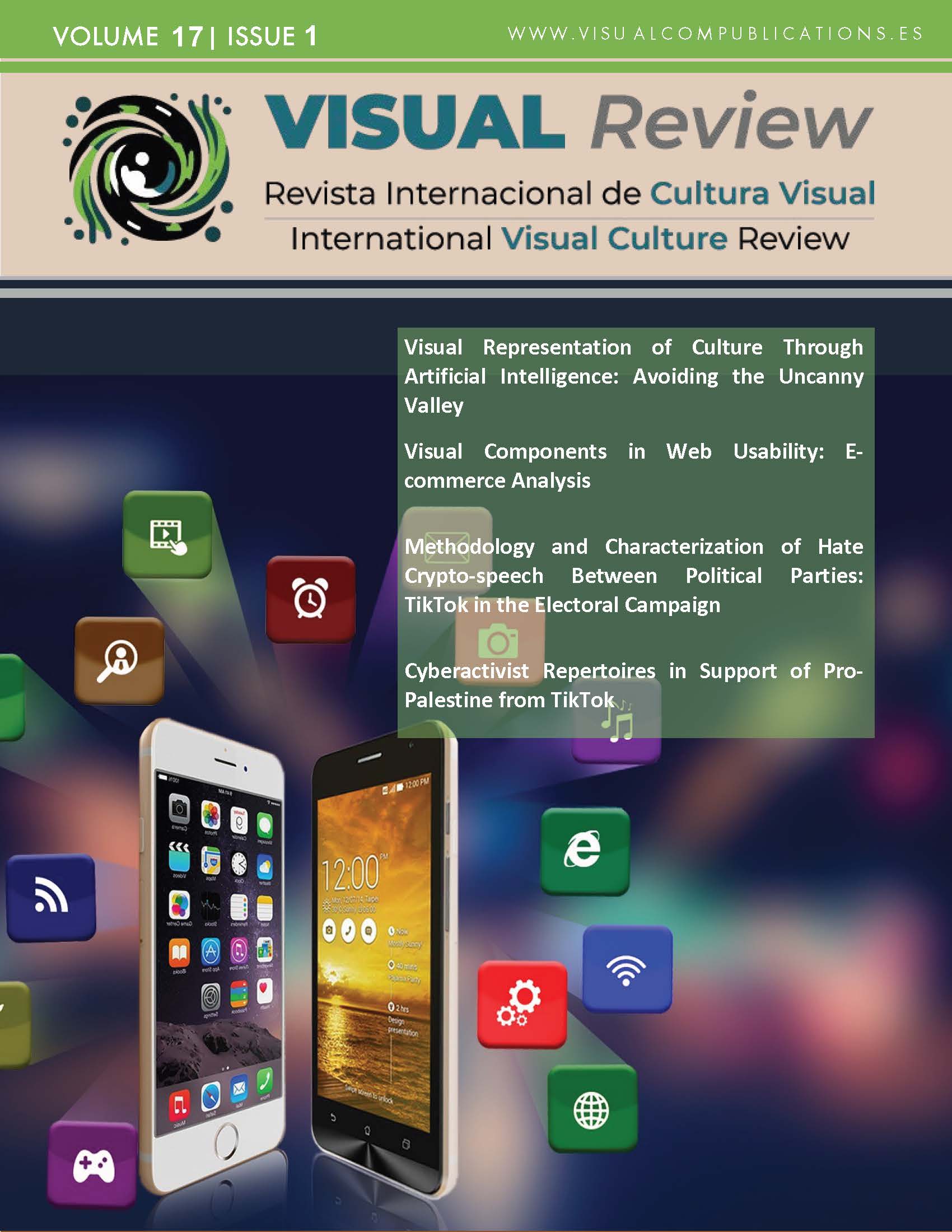Female Representation in the Contemporary Television Western
The Examples of Godless (Netflix, 2017) and The English (BBC, 2022)
DOI:
https://doi.org/10.62161/revvisual.v17.5359Keywords:
Television fiction, western, television, gender, feminism, television seriesAbstract
This paper presents a case study of two significant television fictions on female representation in the contemporary television western: Godless (Netflix, 2017) and The English (BBC, 2022), broadcast on streaming platforms. For this research, a qualitative methodology is employed that applies an analysis of gender studies in order to analyze the narrative, characters and verbal stereotypes, and identify the processes of signification associated with the female model. The findings reflect the rise and modernization of the television western. These current works share languages, plots and iconographies with the classic genre, but, at the same time, they propose variations that reach their protagonists and themes. Women increase their presence and importance in these stories and this causes new topics to filter through, such as motherhood, sisterhood or non-normative relationship models. The new female protagonists balance the patriarchal structure and establish more modern, diverse and inclusive narratives.
Downloads
Global Statistics ℹ️
|
588
Views
|
295
Downloads
|
|
883
Total
|
|
References
Altman, R. (2000). Los géneros cinematográficos. Paidós.
Alés, R. (2017). La construcción del estereotipo de la “América Profunda” y su vigencia en la actualidad: el caso de True Detective. Revista Latente, 15, 45-70.
Blanco-Herrero, D., Rodríguez Contreras, L. y Gutiérrez-San Miguel, B. (2021). New forms of masculinity in Western films: The end of the Marlboro Man? Communication & Society, 34(2), 1-14.
Cascajosa, C. (2005). La televisión llega a Hollywood: una aproximación a los dramáticos llevados al cine. Ámbitos: Revista Internacional de Comunicación, 13-14, 91-108.
Cascajosa, C. (2007). Deadwood: la recuperación del pasado fundacional en un western revolucionario. Filmhistoria online, 17, 1-2.
Cawelti, J. (1999). The Six-Gun Mystique Sequel. Bowling Green. OH: Bowling Green State University Popular Press.
Clemente, M.D. (2007). Mujeres del Far West. Estereotipos femeninos del Oeste. Área Abierta, 17, 1-15.
Collins, R. L. (2011). Content analysis of gender roles in media: Where are we now and where should we go? Sex roles, 64(3-4), 290-298.
Coronado, C. y Galán, E. (2015). Mujer y ámbito laboral en la ficción española sobre la Transición. Cuadernos de Relaciones Laborales, 35(1), 209-226.
Deltell, L. (2009). La década de los treinta en Estados Unidos. En L. Deltell, J. García y M. Quero (Eds.). Breve Historia del Cine (pp. 105-137). Fragua.
Díaz, V. (2023). Si no lo puedes diferenciar, ¿acaso importa?: El círculo mágico y el marco en Westworld. Teknokultura, 20 (1), 143-150.
De-Caso-Bausela, E., González-de-Garay, B., y Marcos-Ramos, M. (2020). Representación de género en las series generalistas de televisión españolas emitidas en prime time (2017-2018). Profesional De La información, 29(2). https://doi.org/10.3145/epi.2020.mar.08
Fernández de Mata, I. (2017). La atrayente degradación del mito nacional: Deadwood, un western post 11-S. Oceánide, 9, 1-19.
Fernández-Villanueva, C., Revilla-Castro, J.C., Domínguez-Bilbao, R., Gimeno Jiménez, L. y Almagro, A. (2009). Gender differences in the representation of violence on Spanish television: should women be more violent? Sex Roles, 61, 85-100.
Galán, E. (2007). Construcción de género y ficción televisiva en España. Comunicar, 28, 229-236.
Garin, M. (2013). Deadwood y las ruinas del western: del print the legend cinematográfico a la historización televisiva. En Hueso, A.L. y Camarero, G. (Coords.). Modelos de interpretación para el cine histórico (pp. 47-57). Universidad de Santiago de Compostela, Servicio de Publicaciones e Intercambio Científico.
Geena Davis Institute on Gender in Media (2014). Gender bias without borders: An investigation of female characters in popular films across 11 countries. https://seejane.org/wp-content/uploads/gender-bias-without-borders-full-report.pdf
Geena Davis Institute on Gender in Media (2016). The Reel Truth: Women Aren’t Seen or Heard. An Automated Analysis of Gender Representation in Popular Films. https://seejane.org/wp-content/uploads/gdiq-reel-truth-women-arent-seen-or-heard-automated-analysis.pdf
Geena Davis Institute on Gender in Media (2018). Representations of Women STEM Characters in Media. https://seejane.org/wp-content/uploads/portray-her-full-report.pdf
Glucksmann, A. (1993). Les aventures de la tragédie. En R. Bellour (Ed.). Le Western (pp. 350-379). Gallimard.
González, J.A. (2024). El post-western policial en el “nuevo cine argentino”. En Sánchez Zapatero, J. y Martín Escribà, A. Todos los colores del (género) negro: estudios sobre novela, cine y otros medios (pp. 271-278). Dykinson.
Gubern, R. (2005). Historia del cine. Anagrama.
Hawagood, J. (1976). The American West. Frontier.
Huertas, M. (2018). Westworld a la estela de Juego de Tronos y de la HBO. Fórum de Recerca, 23, 115-127. http://doi.org/10.6035/ForumRecerca.2018.23.8
Jones, H. (2011). Them as feel the need to be free: reworking the frontier myth. Southern Communication Journal, 76(3), 230-247. https://doi.org/10.1080/1041794x.2010.507109
Kahlenberg, S. G., y Hein, M. M. (2010). Progression on Nickelodeon? Gender-role stereotypes in toy commercials. Sex Roles, 62, 830–847.
Kaminski, S. (1974). American Film genres. Burham: Amazon.
Lacalle, C. y Castro, D. (2017). Representations of female sexuality in Spanish television fiction. Convergencia. Revista de Ciencias Sociales, 24(75), 45-64.
Lee, J. (2022). Damsels un-distressed: scoring complex women in HBO’s Westworld: The Maze (2016). Cuadernos de investigación musical, 15, 119-136. https://doi.org/10.18239/invesmusic.2022.15.11
Lorenzo-Otero, J. L. (2023). Migraciones intermediales en el género del wéstern: un análisis de la serie Red Dead. Revista Humanidades, 13(1), e52608. https://doi.org/ 10.15517/h.v13i1.52608
López de la Osa, P. (2018). El paisaje posmoderno: revisitando la ecología del western en The Hatful Eight. En Carretero, M. y Marchena, J. (Eds.). Representaciones culturales de la naturaleza alter-humana (pp. 455-472). Servicio de Publicaciones de la Universidad de Cádiz.
Marcos Ramos, M., y González-de-Garay, B. (2021). Gender representation in subscription-video-on-demand Spanish tv series. International Journal of Communication, 15, 581–604. https://ijoc.org/index.php/ijoc/article/view/15855/3339
Martín García, T., Marcos Ramos, M. y Angulo Brunet, A. (2023). ¿Son las series españolas diversas? Un análisis sobre la inclusión en las plataformas. Cuadernos.info, 56, 206-229. https://doi.org/ 10.7764/cdi.56.62707
Mager, J., y Helgeson, J. (2010). Fifty years of advertising images: Some changing perspectives on role portrayals along with enduring consistencies. Sex Roles.
Murdock, M. (1990). Ser mujer. Un Viaje Heroico. Gaia Ediciones.
Murdock, M. (2016). Articles: The Heroine’s Journey. https://maureenmurdock.com/articles/articles-the-heroines-journey/
ODA. (2023). Informe ODA 2023 (2022 ODA Report). Observatorio de la Diversidad en los Medios Audiovisuales.
Sánchez Noriega, J. L. (2002). Historia del Cine: Teorías, estética, géneros. Alianza Editorial.
Sánchez-Escalonilla, A. (2002). Guion de aventura y forja del héroe. Ariel cine.
Santamarina-Macho, C. (2017). El nuevo viejo oeste. Un paisaje sin lugar. Ra, 19, 57-66.
Smith, S. L., Pieper, K. M., Granados, A., y Choueiti, M. (2010). Assessing genderrelated portrayals in top-grossing G-rated films. Sex Roles, 62, 774–786.
Stanley, T.L. (2012, Jun 2). ‘Hatfields & McCoys’ is a History-changing success. Los Angeles Times. https://www.latimes.com/entertainment/la-xpm-2012-jun-02-la-et-hatfields-mccoys-20120602-story.html
Tatum, S. (2013). The Western Film Critic as “Shootist”. Journal of Popular Film and Television, 11(3), 114-121. https://www.doi.org/10.1080/01956051.1983.10661955
Valhondo, J.L. (2021). El western como género para abordar la gestión de las identidades del siglo XXI. En Paredes, G. y Sánchez, N. (Coords.). De la filosofía digital a la sociedad del videojuego. Literatura, pensamiento y gamificación en la era de las redes sociales (pp. 67-83). Dykinson.
Westerfelhaus, R. y Lacroix, C. (2009). Waiting for the barbarians: HBO’s Deadwood as a post-9/11 ritual of disquiet. Southern Communication Journal, 74(1), 18-39.
Wildermuth, M. (2018). Feminism and the Western in Film and Television. Palgrave.
Zurian, F. A. y Herrero, B. (2014). Los estudios de género y la teoría fílmica feminista como marco teórico y metodológico para la investigación en Cultura Audiovisual. Área Abierta, 14, 3, 5-21.
Referencias audiovisuales:
(NBC, 2021-22) [Serie de televisión].
(NBC, 2022) [Serie de televisión].
Bonanza (NBC, 1959-1973) [Serie de televisión].
Cheyenne (ABC, 1955-63), [Serie de televisión].
Deadwood (HBO, 2004-06) [Serie de televisión].
Ford, J. (Director). (1962). The man who shot Liberty Valance. [Película]. Paramount Pictures.
Godless (Netflix, 2017) [Serie de televisión].
Gunsmoke (CBS, 1955-1975), [Serie de televisión].
Hatfields & McCoys (History, 2012) [Serie de televisión].
Have gun, Will travel (CBS, 1957-63) [Serie de televisión].
Justified (FX, 2010-15) [Serie de televisión].
Lonesome Dove (CBS, 1989) [Serie de televisión].
Longmire (Netflix, 2012-16) [Serie de televisión].
Outer Ranger (Amazon Prime, 2022) [Serie de televisión].
Porter, E. (Director). (1903). The Great Train Robbery. [Película]. Edison Manufacturing Company.
Raimi, S. (Director). (1955). The Quick and the Dead. [Película]. TriStar Pictures, JBS.
Raise Hell (2011-16) [Serie de televisión].
Ruggles, W. (Director). (1931). Cimarron [Película]. RKO Radio Pictures.
The Big Valley (ABC, 1965-1968) [Serie de televisión].
The English (BBC, 2022) [Serie de televisión].
The High Chaparral (NBC, 1967-1971) [Serie de televisión].
The Rifleman (ABC, 1958-1963) [Serie de televisión].
The Virginian (NBC, 1962-1971) [Serie de televisión].
Westworld (HBO, 2016) [Serie de televisión].
Wynona Earp (Syfy, 2016-21) [Serie de televisión].
Downloads
Published
How to Cite
Issue
Section
License
Copyright (c) 2025 VISUAL REVIEW. International Visual Culture Review / Revista Internacional de Cultura Visual

This work is licensed under a Creative Commons Attribution-NoDerivatives 4.0 International License.
Those authors who publish in this journal accept the following terms:
-
Authors retain copyright.
-
Authors transfer to the journal the right of first publication. The journal also owns the publishing rights.
-
All published contents are governed by an Attribution-NoDerivatives 4.0 International License.
Access the informative version and legal text of the license. By virtue of this, third parties are allowed to use what is published as long as they mention the authorship of the work and the first publication in this journal. If you transform the material, you may not distribute the modified work. -
Authors may make other independent and additional contractual arrangements for non-exclusive distribution of the version of the article published in this journal (e.g., inclusion in an institutional repository or publication in a book) as long as they clearly indicate that the work was first published in this journal.
- Authors are allowed and recommended to publish their work on the Internet (for example on institutional and personal websites), following the publication of, and referencing the journal, as this could lead to constructive exchanges and a more extensive and quick circulation of published works (see The Effect of Open Access).













